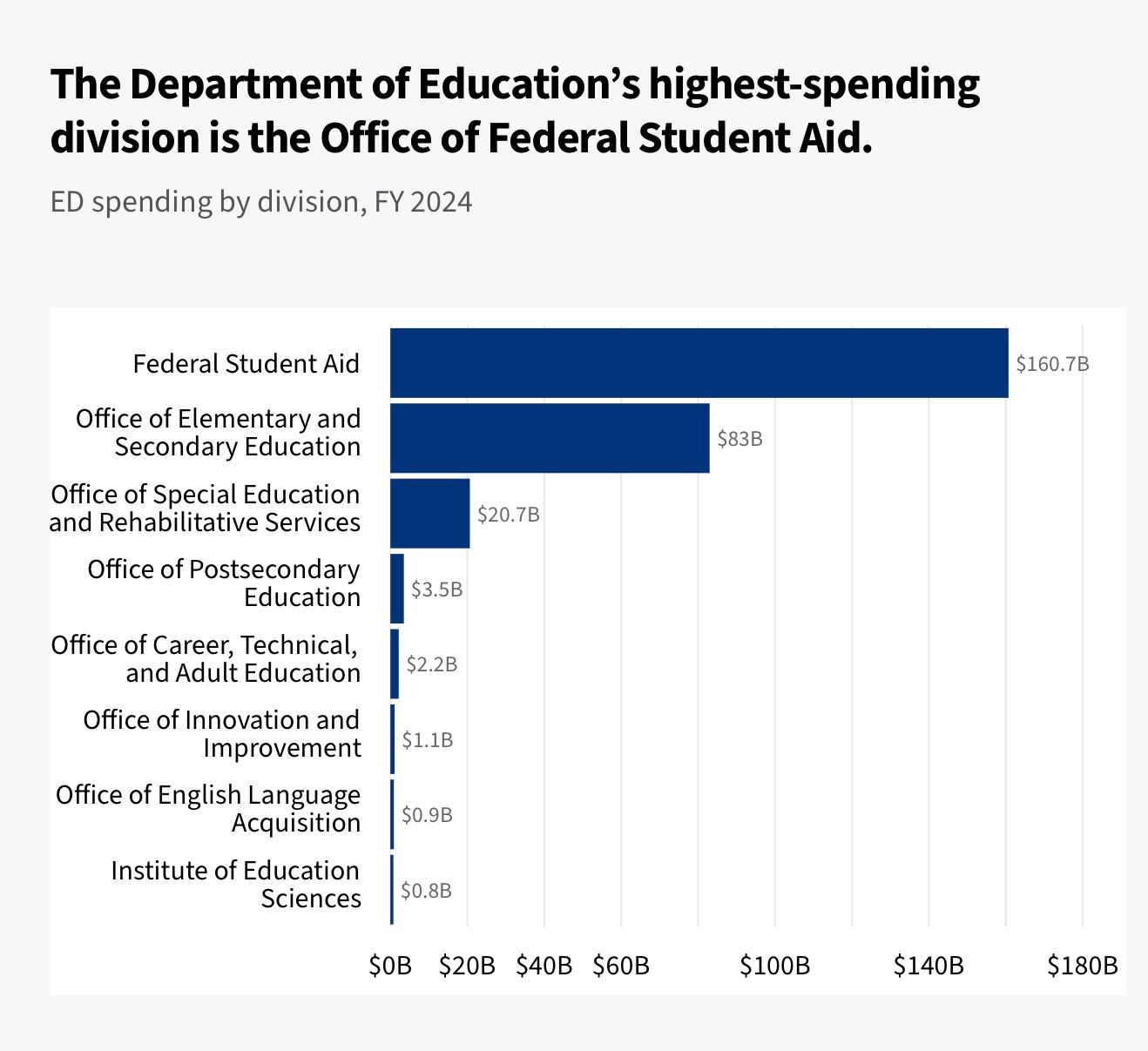Sacred Cows
From a homeschool veteran’s point of view: Dismantling the U.S. Department of Education is not a tragedy.
Sacred Cow - Something which cannot be tampered with, or criticized, for fear of public outcry. A person, institution, belief system, etc. which, for no reason other than the demands of established social etiquette or popular opinion, should be accorded respect or reverence, and not touched, handled or examined too closely.
The U.S. Department of Education was elevated to a presidential cabinet position under President Jimmy Carter in 1980.
The President created it as a cabinet level office and he can eliminate it too.
The U.S. Department of Education is headed by the Secretary of Education, who is nominated by the president, confirmed by the Senate, and then sworn into office.
They are one of the 15 cabinet members who serve at the president's discretion.
As homeschoolers we were constantly vigilant regarding what the State Department of Education, the U.S. Department of Education, and the National Education Association (NEA) were doing regarding be able to educate our own children.
Because of this, I became acutely aware of the power players.
Homeschooling is Political
The homeschooling movement has a long history that is flavored with many characters and there are a variety of reasons why homeschooling came about. Many people just assume homeschooling is about religious freedom. I have experienced this firsthand because many people I have encountered along the way assumed that because I was homeschooling, I was some kind of religious fanatic.
I am not.
People homeschool because they do not agree with what popular culture dictates as the “norm”.
Once you step outside the norm for society, you are into making a social statement and eventually that leads to making a political statement.
Homeschooling is a political statement.
When you dissect any political statement, you get down to two very basic components:
Power.
Money.
When it comes to power and money with the education industry, you’re dealing with some heavy-duty players. As a homeschooler, you are defying what these players are expecting from you.
Some have morphed to serve you, some to defeat you.
The U.S. Department of Education
It was established in 1980 after the Department of Health, Education, and Welfare was reorganized into separate entities. President Carter elevated the Secretary of Education to a cabinet position.
It is the agency of the executive branch responsible for overseeing education policy and administering funding for programs and individuals.
The department's functions include supporting state and local education efforts, providing grants and loans to higher education institutions and students. They also claim at their website they are promoting educational equity for all students.
When Congress created the Department in 1979, it declared these powers and purposes:
to strengthen the Federal commitment to ensuring access to equal educational opportunity for every individual;
to supplement and complement the efforts of States, the local school systems and other instrumentalities of the States, the private sector, public and private educational institutions, public and private nonprofit educational research institutions, community-based organizations, parents, and students to improve the quality of education;
to encourage the increased involvement of the public, parents, and students in Federal education programs;
to promote improvements in the quality and usefulness of education through federally supported research, evaluation, and sharing of information;
to improve the coordination of Federal education programs;
to improve the management and efficiency of Federal education activities, especially with respect to the process, procedures, and administrative structures for the dispersal of Federal funds, as well as the reduction of unnecessary and duplicative burdens and constraints, including unnecessary paperwork, on the recipients of Federal funds; and
to increase the accountability of Federal education programs to the President, the Congress and the public. (Section 102, Public Law 96-88)
In creating the Department of Education, Congress also specified that:
No provision of a program administered by the Secretary or by any other officer of the Department shall be construed to authorize the Secretary or any such officer to exercise any direction, supervision, or control over the curriculum, program of instruction, administration, or personnel of any educational institution, school, or school system, over any accrediting agency or association, or over the selection or content of library resources, textbooks, or other instructional materials by any educational institution or school system, except to the extent authorized by law. (Section 103[b], Public Law 96-88)
Thus, the Department does not
establish schools and colleges;
develop curricula;
set requirements for enrollment and graduation;
determine state education standards; or
develop or implement testing to measure whether states are meeting their education standards.
The U.S. Department of Education has limited power.
We’ll get to the real power player in a minute, but lets look at the money part for the U.S. Department of Education.
The Department of Education spent $268 billion in fiscal year (FY) 2024.
This was 4.0% of the $6.8 trillion in overall federal spending.
Ten government agencies accounted for 97.0% of federal spending in fiscal year 2024
The Department of Education ranked sixth among federal agencies in total spending.
Source: Office of Management and Budget and US Department of the Treasury.
From this graph, one might takeaway the idea the Department of Education is in the business of giving away taxpayer money.
It is.
It’s how a president can forgive student loans (Federal Student Aid).
So it’s not a tragedy in my opinion if it gets eliminated in the near future.
You’ll read that the President can’t eliminate it by Executive Order, and that’s true.
Some of the offices in that graph above were created by Congressional act like the Office of Elementary and Secondary Education came out of the Elementary and Secondary Education Act of 1965. It’s where Title I funding comes from. Title I funding disperses funds to schools that serve low-income students. Another is the Office of Special Education and Rehabilitative Services (Title IX(9)) which came from the Individuals with Disabilities Education Act.
These offices cannot be eliminated by law, but they can be moved elsewhere where budgets can be more effectively controlled.
But.
Even if you eliminate the U.S. Department of Education, you still have the NEA to deal with.


The NEA
The National Educational Association (NEA) founded in 1857, is the most prominent teacher’s union in the United States. It represents nearly three million, principally teachers. It exercises enormous political clout in everything from contract negotiations to issue advocacy and lobbying.
The president of the NEA is elected by members, her photo above:
NEA president Becky Pringle is a fierce social justice warrior, defender of educator rights, an unrelenting advocate for all students and communities of color, and a valued and respected voice in the education arena. A middle school science teacher with more than three decades of classroom experience, Becky is singularly focused on using her intellect, passion, and purpose to unite the members of the largest labor union with the entire nation, and using that collective power to fulfill the promise of public education.
The NEA is a major political player, with its associated political action committees contributing nearly $143.5 million to federal candidates and committees, 97% of which supported Democrats and liberals from 1990 through 2019.
As a presidential candidate in 1976, Carter promised the NEA that he would push for a separate education department, a goal the NEA had sought for a century. In return, the nation’s largest teachers’ union made the first presidential endorsement in its then-117-year history.
Is the Department of Education a creature of the NEA?
"That's true," said the 1980’s NEA executive director Terry Herndon. "There'd be no department without the NEA."
NEA advocates for a wide array of left-of-center positions on education and other political issues:
CRITICAL RACE THEORY - In July 2021, the NEA’s Representative Assembly passed a resolution encouraging the organization to “oppose attempts to ban critical race theory and/or The 1619 Project.”
SCHOOL VOUCHERS AND CHARTER SCHOOLS - The NEA has been a long time and vocal opponent of school vouchers used to help low-income students afford schools outside of their traditional district school.
9/11 TERRORISM - After the terrorist attacks on September 11, 2001, NEA issued guidelines on how teachers should discuss the attacks, urging teachers to show students how America had mistreated other people and nations, stressing the need for children to be tolerant of other cultures, and stating that teachers should not “suggest that any group [was] responsible” for 9/11.
ACORN DONATIONS - The NEA also donated heavily to the now-defunct progressive community organizing group Association of Community Organizations for Reform Now (ACORN). From 2006-2008, NEA donated nearly $400,000 to a group that was accused of voter fraud, advising on how to dodge taxes, and more. NEA was later forced to retract support for ACORN.
The NEA is also deeply entangled in state and local politics and is a major contributor to left-of-center nonprofit organizations.
From their website:
We’re here to
MAKE SURE EVERY STUDENT & EDUCATOR SUCCEEDS.
The National Education Association (NEA) is more than 3 million people—educators, students, activists, workers, parents, neighbors, friends—who believe in opportunity for all students and in the power of public education to transform lives and create a more just and inclusive society.
Of the total amount spent on education in the United States each year, the federal government accounts for less than 10 percent.
The rest comes from state and local governments and other non-federal sources.


NEA Revenues
NEA is predominantly funded by member dues and agency fees paid by teachers who are obligated to be represented by the union in non-right-to-work states.
What are non-right-to-work and right-to-work states?
In non-right-to-work states, local affiliates of the NEA will have collective bargaining agreements (CBAs) with school districts that include agency fee provisions. These provisions require non-union members to pay a fee to the union for the costs of collective bargaining, contract administration, and grievance handling. This changed in 2018 when the U.S. Supreme Court’s decision in Janus v. AFSCME ruled that public sector unions cannot collect agency fees from non-consenting employees.
Right-to-work states have implemented right-to-work laws. As of 2024, there are 26 states with right-to-work laws. Most of them are red states (states that lean right or republican). Right-to-work laws protect an employee’s right to choose whether to participate in a labor union. In states with right-to-work laws, no employee can be forced to join a union or pay union dues to secure or keep their job. In these states, teachers and other educators can choose whether to join the NEA or pay union dues without facing job-related consequences.
So to condense this idea further, prior to 2018, the NEA was a ruthless organization of thugs extracting dues from union and non-union teachers salaries.
As of 2020, NEA reported total assets of over $411 million, income of over $390 million, and expenses at over $377 million.
Roughly $369 million of the NEA’s income came from NEA membership dues; the rest came from areas including loan repayments, interest, dividends, rents, reinvestment, and investment.
The NEA Foundation is NEA’s affiliated 501(c)(3) charitable arm, which itself offers grants and awards funded from teacher dues, corporate sponsors, foundations, and other donors.
The NEA Foundation has received over $75,000 from big-name donors like AT&T, Bank of America, and the Bill & Melinda Gates Foundation. The NEA Foundation has also received tens of thousands of dollars from the BET Networks, Southwest Airlines, Prudential Insurance Company of America, and more.
The NEA and Homeschooling
The NEA and local school boards generally oppose homeschooling.
The NEA and school boards do not want parents interfering with what they deem “education”.
Both groups lobby with State and Federal legislatures against homeschooling for two big reasons.
First, if parents are teaching kids at home, they replace thousands of union teachers nationwide and that alone can reduce the power the NEA has.
Second, is the idea that Federal and State public school financing is based on per-enrolled student. If kids are not at the schools the dollars are not in the hands of administrators.
Teachers’ unions and the school boards often see homeschooling parents as literally taking funds away from them.
A fact known by the homeschooling community is that the established teaching profession and the NEA are very intimidated by the successes of homeschoolers.
They are in the business of keeping the public school system alive and are more concerned about preserving the public school system than in educating the students.
And in any read about educating American students, you’ll find they are not being educated, rather indoctrinated. Math scores have fallen, kids can’t read at grade level.
In this homeschooler’s mind, the NEA is like organized crime, La Cosa Nostra, mafia, mob.
So my conclusion is eliminating The U.S. Department of Education is a good start at clawing back ill-spent taxpayer money. But it’s the NEA that needs to be eliminated to restore quality and equitable education in America.
Curious about homeschooling?
Some popular reads from my series:










Thank you for the education!
Very informative. Thank you.